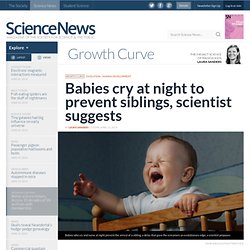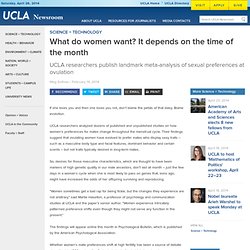

Women With More Male Friends Have More Sex Because Partners Fear ‘Sex Rivals’ Men and women do not have different brains, claims neuroscientist. “You can’t pick up a brain and say ‘that’s a girls brain, or that’s a boys brain’ in the same way you can with the skeleton.

They look the same.” Prof Rippon points to earlier studies that showed the brains of London black cab drivers physically changed after they had acquired The Knowledge – an encyclopaedic recall of the capital’s streets. She believes differences in male and female brains are due to similar cultural stimuli. A women’s brain may therefore become ‘wired’ for multi-tasking simply because society expects that of her and so she uses that part of her brain more often. The brain adapts in the same way as a muscle gets larger with extra use. “What often isn’t picked up on is how plastic and permeable the brain is. “The world is full of stereotypical attitudes and unconscious bias.
Prof Rippon believes that gender differences appear early in western societies and are based on traditional stereotypes of how boys and girls should behave and which toys they should play with. Men Think Women Who Listen To Them Are Sexier. Toward a Universal Theory of 'Cool' - Derek Thompson. The concept of "cool" seems to resist definition.

In a paper published this week, two business and psychology professors just defined it. Warner Brothers What makes things cool? What penumbral principle explains not only the marketing campaigns of Harley Davidson, Apple, and Dos Equis, but also the appeal of cowboys, James Dean, and Jennifer Lawrence? A new paper in the Journal of Consumer Research takes a stab at answering what might be an unanswerable question by studying how brands and companies become cool in the eyes of consumers. To understand their theory of cool, compare it to another possibly undefinable concept: humor. A woman gets on a bus with her baby. But Superiority Theory doesn't do much to explain why we recognize other jokes as jokes. Benign violation means your expectations are subverted—obvious jokes aren't funny—in a way that poses no threat or sadness to the audience.
Like humor and beauty, coolness seems to defy definition. Menstrual studies debunked: Women do not make mating decisions based on their periods. Photo by Peter Bernik/Shutterstock What do women want?

Over the past two decades, scientists have endeavored to answer this question by bringing women into their labs, asking about their sexual preferences, and then monitoring their menstrual cycles to try to extract clues from the ebb and flow of hormones in their mysterious female bodies. Babies cry at night to prevent siblings, scientist suggests. When a baby cries at night, exhausted parents scramble to figure out why.

He’s hungry. Wet. Cold. Lonely. But now, a Harvard scientist offers more sinister explanation: The baby who demands to be breastfed in the middle of the night is preventing his mom from getting pregnant again. This devious intention makes perfect sense, says evolutionary biologist David Haig, who describes his idea in Evolution, Medicine and Public Health.
What do women want? It depends on the time of the month. If she loves you and then she loves you not, don’t blame the petals of that daisy.

Blame evolution. UCLA researchers analyzed dozens of published and unpublished studies on how women’s preferences for mates change throughout the menstrual cycle. Their findings suggest that ovulating women have evolved to prefer mates who display sexy traits – such as a masculine body type and facial features, dominant behavior and certain scents – but not traits typically desired in long-term mates. So, desires for those masculine characteristics, which are thought to have been markers of high genetic quality in our male ancestors, don’t last all month – just the few days in a woman’s cycle when she is most likely to pass on genes that, eons ago, might have increased the odds of her offspring surviving and reproducing. The findings will appear online this month in Psychological Bulletin, which is published by the American Psychological Association.
'+windowtitle+' News Women may perceive men with wider faces as more dominant and more attractive for short-term relationships, according to a new study in Psychological Science, a journal of the Association for Psychological Science.

“Our study shows that within three minutes of meeting in real life, women find more dominant, wider-faced men attractive for short-term relationships, and want to go on another date with them,” says psychological scientist and lead researcher Katherine Valentine of Singapore Management University. According to Valentine, there’s considerable academic debate about whether physical dominance is advantageous in mating – that is, actually attractive to women.
At the same time, researchers have been exploring facial width-to-height ratio (fWHR) as a possible physical indicator of male dominance. This new study, she says, addressed both issues: The researchers studied over 150 men and women, ages 18 to 32, who participated in one of several speed-dating events. The Danger in Demonizing Male Sexuality. G-strings and Ph.D.s. The Female 'Viagra' M/F Libido. Women want taller men more than men want shorter women. Abstract Physical characteristics, such as height, play an important role in human mate preferences.

Satisfaction with one’s own height and one’s partner height seem likely to be related to these preferences. Using a student sample (N = 650), we show that women are not only more selective, but also more consistent, than men, in their partner height preferences. Women prefer, on average, a larger height difference between themselves and their partner (i.e. males being much taller than themselves) than men do.